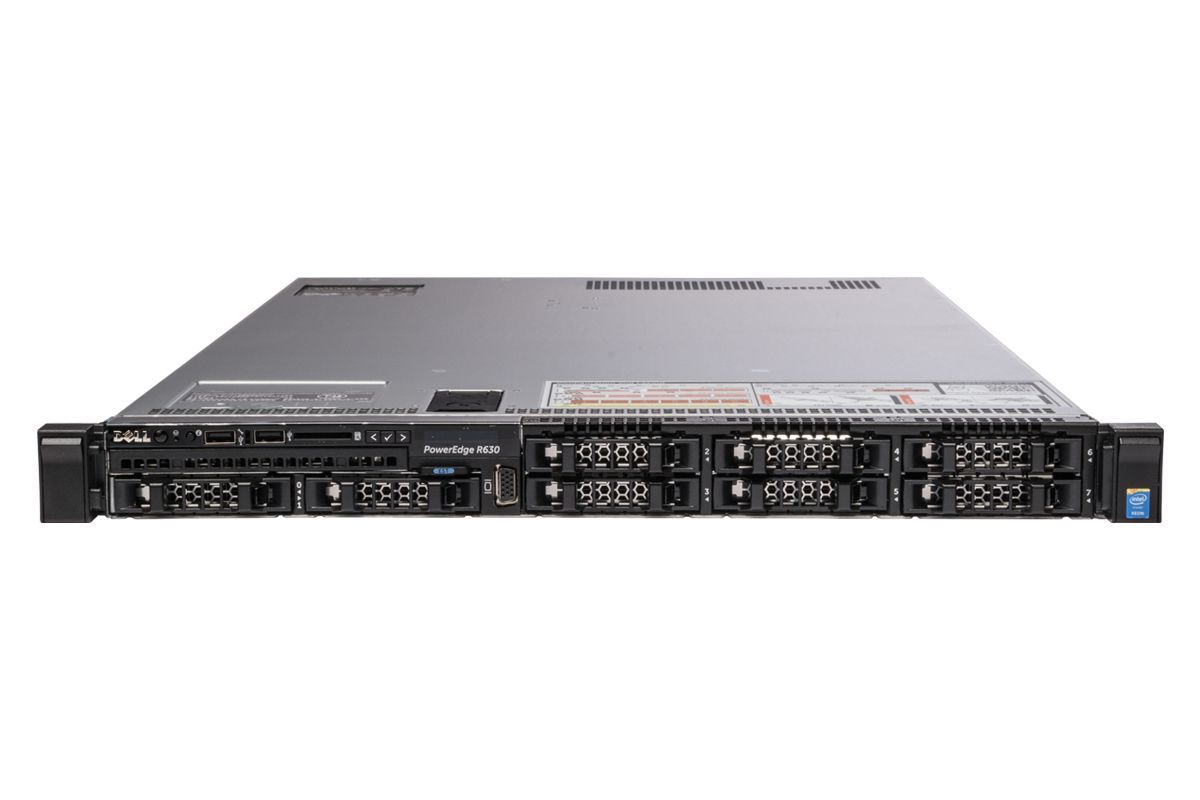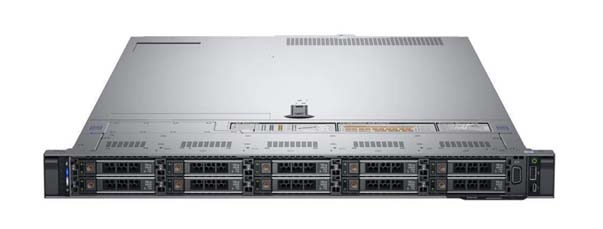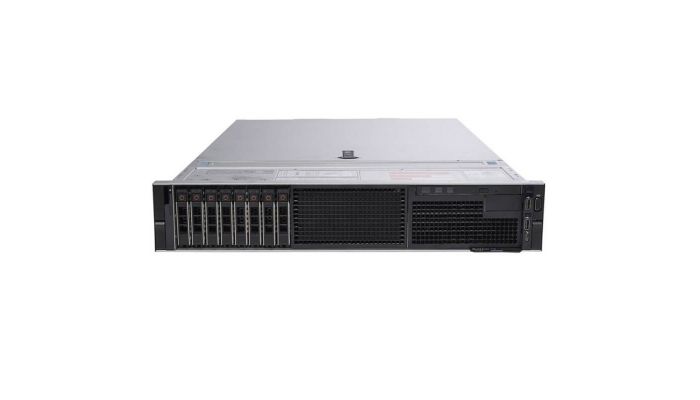Proxmox Cluster Purchase and Setup Guide in Canada
Run proxmox on rigorously tested and updated used servers
Build a powerful, high-availability virtual environment with reliable hardware from usedservers.ca
This guide provides a comprehensive walkthrough for building a high-availability (HA) Proxmox VE cluster using reliable and cost-effective refurbished Dell PowerEdge servers. We will explore several hardware tiers to fit different budgets and performance requirements, from entry-level setups to high-performance NVMe-based clusters.
Keep in mind:
Prices are as of October 2025 and may flucuate, some equipment or options may no longer be availble.
Below is a rough guide which reccomends at least a 3 node cluster but you can build 5, 7... etc. We encourage you to read official ProxMox documentation and setup guides as we focus on providing you with budget saving hardware.
You can use the server configuration as an approximate guide and change RAM/CPU/HDD/SSD/ Network options as needed for your requirement. For example instead of R630 you can choose R730 with GPU options with more ram and less hard drive space.
For CEPH storage we strongly reccomend NVME with 25GB or higher networking in high demand production environments.
The goal is to create a robust, 3-node cluster that enables advanced features like High Availability and live migration, ensuring your virtual machines remain online even if a physical server fails.
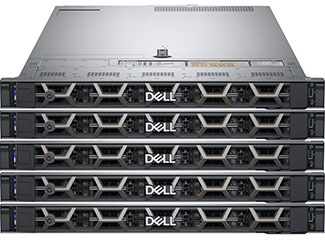
Peace of Mind Through Rigorous Testing
Every server we sell undergoes a comprehensive testing and firmware update process. We ensure that all components are stable, reliable, and running the latest certified firmware, so you can build your cluster with confidence.
Learn About Our Testing ProcessNeed Help Planning Your Cluster?
The configurations and prices listed are approximate and subject to market fluctuations. We are available for consultation to help you design a cluster that perfectly fits your budget and technical requirements.
Contact Us for a ConsultationComplete Guide Index
Start Here
Cluster Packages
Storage & Networking
Core Concepts
Proxmox VE
An open-source virtualization platform combining KVM for VMs and LXC for lightweight Linux containers.
Clustering & HA
Joining multiple servers so if one fails, VMs automatically restart on another available node.
Ceph Storage
Software-defined storage that turns local server disks into a single, resilient, shared storage pool.
Dedicated Networking
A fast, reliable 10GbE+ network is critical for storage traffic and live migration performance.
Choose Your Proxmox Cluster Package
The following packages are recommended starting points. All configurations can be customized to meet your specific needs. The listed prices are approximations for a 3-node cluster and are subject to change.*
Tier 1: The Budget Cluster (Dell PowerEdge R620)
Approximate 3-Node Cluster Price: ~$2,500*
An excellent entry point for a home lab or small business. Incredibly affordable but still powerful enough to run a wide variety of services.
- Model: Dell PowerEdge R620 1U Server - 8 x 2.5" Bay SFF
- CPU: 2x E5-2690v2 @ 3.00 GHz (20 Cores / 40 Threads Total)
- RAM: 64GB DDR3 ECC RAM (8x 8GB)
- Hard Drives: 2x 960GB Enterprise SATA SSD
- Networking: 2x 10GbE SFP+ & 2x 1GbE or 2x 10GbE RJ45 & 2x 1GbE
- RAID Controller: PERC H310 (Configured for Proxmox by our team)
Ideally you would need to add 2 per server of 480GB SSD or 960GB SSD for boot/proxmox install so the VMs are not running on hypervisors
You can add to cart along with 3x servers and we will install them.
It is also possible to run on 1GB Networking but HA speed would be slower.
Tier 2: The Mid-Range Powerhouse (Dell PowerEdge R630)
Approximate 3-Node Cluster Price: ~$4,500*
Introduces DDR4 memory and more efficient CPUs, offering better performance-per-watt for more demanding workloads.
- Model: Dell PowerEdge R630 1U - 8x2.5" Bay SFF Server
- CPU: 2x E5-2697 v3 @ 2.60 GHz (28 Cores / 56 Threads Total)
- RAM: 128GB DDR4 ECC RAM (8x 16GB)
- Hard Drives: 2x 960GB Enterprise SATA SSD
- Networking: 2x 10GbE SFP+ & 2x 1GbE or 2x 10GbE RJ45 & 2x 1GbE
- RAID Controller: HBA 330 (Ready for Proxmox)
Ideally you would need to add 2 per server of 480GB SSD or 960GB SSD for boot/proxmox install so the VMs are not running on hypervisors
You can add to cart along with 3x servers and we will install them.
Tier 3: The Modern Workhorse (Dell PowerEdge R640 - SAS)
Approximate 3-Node Cluster Price: ~$14,000*
The minimum recommended tier for a high-performing modern cluster and is also compatible with VMware if your needs change.
- Model: Dell PowerEdge R640 - 10x 2.5" 1U SFF Server
- CPU: 2x Intel Gold 6148 2.4 Ghz (40 Cores / 80 Threads Total)
- RAM: 256GB DDR4 ECC RAM (16x 16GB)
- Hard Drives: 2x 3.84TB SAS 12Gbps SSD
- Networking: 2x 25GB SFP+ Ports
- RAID Controller: HBA 330
Ideally you would need to add 2 per server of 480GB SSD or 960GB SSD for boot/proxmox install so the VMs are not running on hypervisors.
You can add to cart along with 3x servers and we will install them.
Alternatively you can add a Dell Boss card 1x per server.
Tier 4: The Ceph High-Performer (Dell PowerEdge R640 - NVMe)
Approximate 3-Node Cluster Price: ~$15,000*
For the absolute best storage performance, NVMe is the answer. This configuration is optimized for a blazing-fast Proxmox Ceph cluster. (Not compatible with VMware)
- Model: Dell PowerEdge R640 - 10x 2.5" 1U SFF Server
- CPU: 2x Intel Gold 6148 2.4 Ghz (40 Cores / 80 Threads Total)
- RAM: 256GB DDR4 ECC RAM (16x 16GB)
- Boot Drives: 2x 960GB Enterprise SATA SSD (For boot/proxmox install as it's not possible to boot from NVMe drives)
- NVMe Drives: 4x 4TB PCIe NVMe 2.5'' SSD
- Networking: 2x 25GB SFP+ Ports
- RAID Controller: HBA 330
Tier 5: AI/ML & VDI Workhorse (Dell PowerEdge R740 - GPU)
Approximate 3-Node Cluster Price: ~$18,000*
Ideal for workloads that require GPU acceleration, such as AI/ML, data analytics, or VDI. The NVIDIA Tesla T4 provides excellent performance for GPU passthrough to virtual machines. You can choose resources as needed, ideal configuration has 3x or more identical nodes (compatible with VMware if your needs change).
Proxmox is great for GPU pass through, you can assign GPUs to VMs, this model of R740 supports up to 7x Nvidia T4/A2 GPUs.
Server will also supports up to 2x M10 32GB GPUS . Proxmox sees M10 Tesla as 4x 8GB GPUs and would be able to assign each one to different VMs which is perfect for VDI.
Model: Dell PowerEdge R740 2U - 8x2.5" Bay SFF Server
- CPU: 2x Intel Gold 6148 2.4 Ghz (40 Cores / 80 Threads Total)
- RAM: 256GB DDR4 ECC RAM (16x 16GB)
- Hard Drives: 2x 3.84TB Enterprise SAS SSD
- Networking: 2x 25GB SFP+ Ports
- RAID Controller: HBA 330
- GPU: 1x NVIDIA Tesla T4 16GB GDDR6
We also reccomend a Dell Boss Card for boot, you can add 1x per server.
View R740 Product PageTier 6: The Next Generation (Dell PowerEdge R650 - SAS)
Approximate 3-Node Cluster Price: ~$30,000*
An excellent choice for a powerful, forward-looking cluster that is also VMware compatible, featuring DDR5 support and advanced networking. Compatible with VMware if your needs change.
- Model: Dell PowerEdge R650 - 8x 2.5" SFF
- CPU: 2x Intel Silver 4314 2.4Ghz (32 Cores / 64 Threads Total)
- RAM: 256GB DDR4 ECC 3200MHz RAM (16x 16GB)
- Boot Solution: Dell S2 BOSS Card - 2x 480GB M.2 SATA SSD
- Hard Drives: 4x 3.84TB Enterprise SAS SSD
- Networking: 4x 10/25GbE SFP28 Ports (Broadcom 57504)
Tier 7: The Cutting Edge (Dell PowerEdge R660 - NVMe)
Approximate 3-Node Cluster Price: ~$70,000*
For environments that demand the absolute best performance with the latest technology. Purely optimized for a top-tier Proxmox Ceph deployment.
- Model: Dell EMC PowerEdge R660 XL - 10x NVMe U.2 SSD Server
- CPU: 2x Intel Xeon Gold 6426Y 2.5GHz (32 Cores / 64 Threads Total)
- RAM: 384GB DDR5 ECC RAM (24x 16GB)
- Boot Solution: Dell BOSS N1 - 2x 480GB NVMe SSDs
- NVMe Drives: 4x 4TB Intel NVMe U.2 Drives
- Networking: 4x 10/25GbE SFP28 Ports (Broadcom 57504)
Complete Your Cluster with High-Speed Networking
A fast, reliable network is the backbone of a Proxmox cluster. For Ceph storage, a dedicated 10GbE network is the absolute minimum, with 25GbE or faster being strongly recommended to avoid performance bottlenecks. This network handles the replication of data between servers and ensures storage stability.
Budget Tip: For a 3-node cluster, you can avoid buying a switch by "direct connecting" the servers. Each server would need a dual-port network card, and you would connect each server to the other two, creating a redundant ring network.
10GbE RJ45 (Ethernet)
Cost-effective and easy to deploy using standard Ethernet cables.
- Switch: Juniper QFX5100-48T (48-port) - $975
- Cables: CAT6a/CAT7 Cables
10GbE SFP+
Flexible fiber or DAC cabling for longer runs and lower latency.
- Switch: Cisco Nexus 3548-X (48-port) - $675
- Cables: 3m DAC Cables
25GbE SFP28
The modern standard for high-performance Ceph clusters.
- Switch Option 1: Cisco Nexus 93180YC-EX (48-port) - $1,175
- Switch Option 2: Dell S5248F-ON (48-port) - $2,150
- Network Card: Intel XXV710-DA2 (Dual-port)
- Transceiver (for fiber): 25GBase-SR SFP28 Module
100GbE QSFP28
For the most demanding, large-scale deployments.
- Switch Option 1: Cisco Nexus 93180YC-EX (6x 100GbE) - $1,175
- Switch Option 2: Juniper QFX5200-32C (32x 100GbE) - $2,350
- Network Card: Chelsio T62100-LP-CR (Dual-port) - $345
- DAC Cable: 1m DAC Cable
- Transceiver (for fiber): 100GBase-SR4 QSFP28 Module
Don't Forget Backups!
A proper backup strategy is non-negotiable. Proxmox Backup Server (PBS) is the perfect companion to your PVE cluster, providing efficient, incremental, and deduplicated backups. You can have multiple at multiple locations just ensure the speed is fast enough.
- Recommended Hardware: A storage-dense server like the following:
Any CPU would work ideally and ideally 1GB of RAM per terabyte of storage and 10Gb link - Dell PowerEdge R730xd LFF $750
- Dell PowerEdge R740xd LFF $1600
- Dell PowerEdge R750xs LFF $4500
- Storage: Fill with large capacity Enterprise HDDs in a ZFS RAIDZ2 array.
- Networking: A 10GbE minimum connection to the main cluster switch is highly recommended.
View All Storage Servers
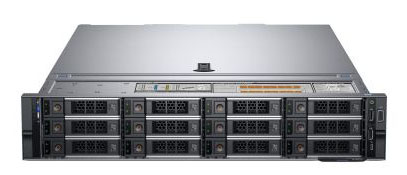
Cluster Setup: Step-by-Step Guide
Step 1: Hardware Preparation & Cabling
Your servers will arrive with the latest firmware and correctly configured RAID controllers (HBA/IT Mode). Your main task is cabling.
- Rack & Power: Install all servers and network switches in your rack. Connect all power supplies to reliable power sources (ideally redundant PDUs).
- iDRAC / Management Network: Connect the dedicated iDRAC port on each server to a management switch. This gives you out-of-band access even if the server is off.
- Proxmox & VM Network: Connect one of the 1GbE ports on each server to your main switch. This will be used for the Proxmox web UI and general VM traffic.
- Ceph / Cluster Network (Crucial!): This high-speed network is for storage and live migration. For maximum performance and redundancy, connect both 10/25/100GbE ports from each server to your high-speed switch. This creates a resilient connection that can tolerate a cable or port failure. For budget switchless setups, see the "Direct Connect" diagram in the networking section.
- Configure iDRAC IP: Boot each server and press F2 for System Setup. Navigate to iDRAC Settings -> Network and assign a static IP address so you can access it from your web browser.
Step 2: Proxmox VE Installation
- Download the latest Proxmox VE ISO and create a bootable USB drive.
- Install Proxmox on your first node. Choose ZFS (RAID1) for the OS drives for redundancy.
Step 3: Initial Configuration (All Nodes)
- Log into the Proxmox web UI and run system updates.
- Add the "No-Subscription" repository to get updates.
- Repeat the installation and configuration on your other nodes.
Step 4: Create & Join the Cluster
- On the first node, navigate to `Datacenter -> Cluster -> Create Cluster`.
- Copy the `Join Information`.
- On the other nodes, go to `Datacenter -> Cluster -> Join Cluster` and paste the information.
Step 5: Configure Ceph Storage
- Install Ceph on each node from the web UI.
- Create Initial Configuration: Use your 10/25GbE network for the public and cluster networks.
- Create Monitors (MONs): Create monitors on the other two nodes.
- Create OSDs: Add each of your designated data drives (SAS/SATA/NVMe) as an OSD on all nodes.
- Create a Ceph Pool: This is where your VM disks will live.
- Add Ceph Storage to Proxmox: Add the new pool as RBD storage in the Datacenter storage configuration.
Setup Complete!
Your highly available Proxmox cluster is now ready. You can begin creating virtual machines and enabling HA for critical workloads.
